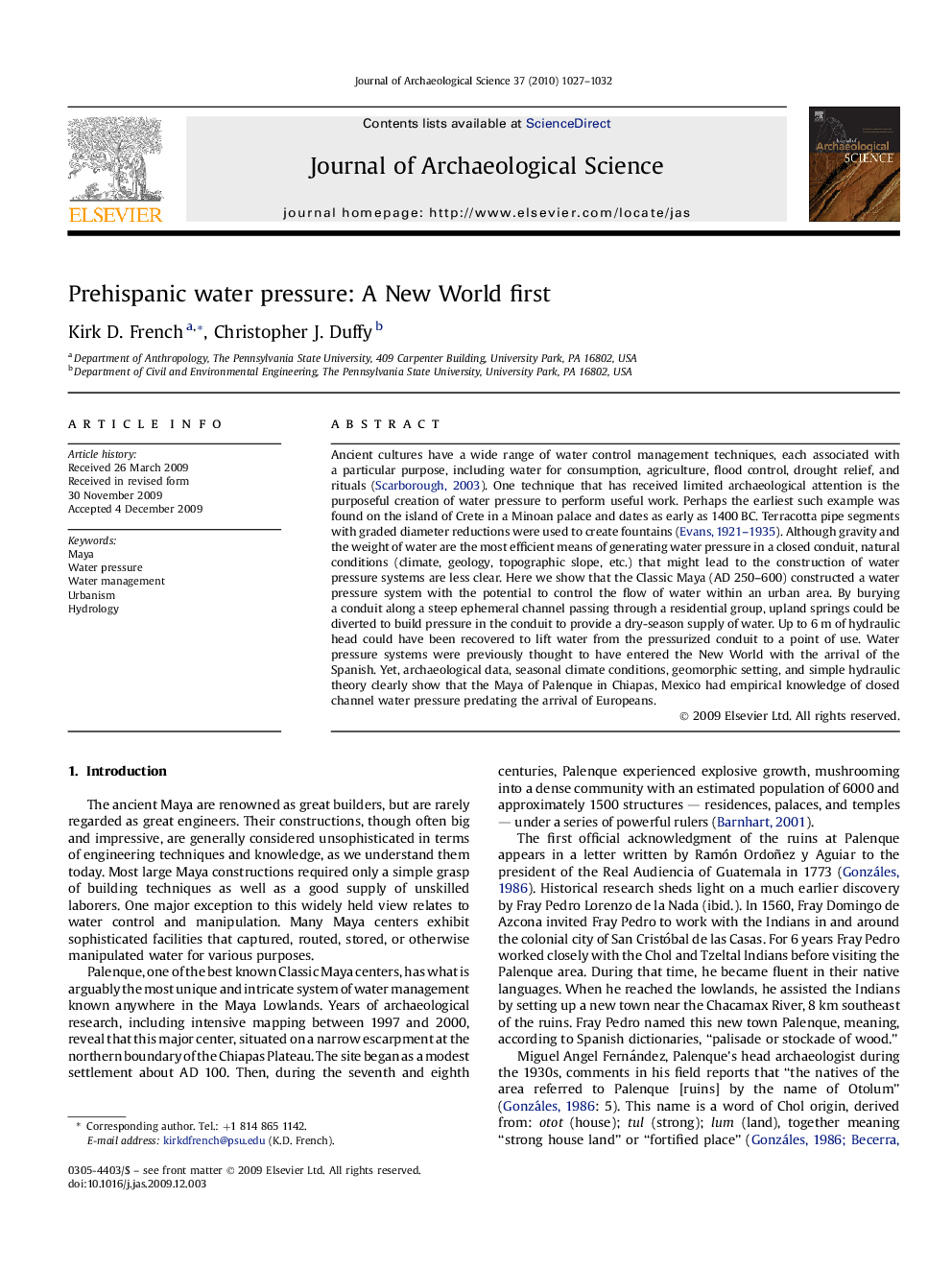| کد مقاله | کد نشریه | سال انتشار | مقاله انگلیسی | نسخه تمام متن |
|---|---|---|---|---|
| 1036869 | 943901 | 2010 | 6 صفحه PDF | دانلود رایگان |

Ancient cultures have a wide range of water control management techniques, each associated with a particular purpose, including water for consumption, agriculture, flood control, drought relief, and rituals (Scarborough, 2003). One technique that has received limited archaeological attention is the purposeful creation of water pressure to perform useful work. Perhaps the earliest such example was found on the island of Crete in a Minoan palace and dates as early as 1400 BC. Terracotta pipe segments with graded diameter reductions were used to create fountains (Evans, 1921–1935). Although gravity and the weight of water are the most efficient means of generating water pressure in a closed conduit, natural conditions (climate, geology, topographic slope, etc.) that might lead to the construction of water pressure systems are less clear. Here we show that the Classic Maya (AD 250–600) constructed a water pressure system with the potential to control the flow of water within an urban area. By burying a conduit along a steep ephemeral channel passing through a residential group, upland springs could be diverted to build pressure in the conduit to provide a dry-season supply of water. Up to 6 m of hydraulic head could have been recovered to lift water from the pressurized conduit to a point of use. Water pressure systems were previously thought to have entered the New World with the arrival of the Spanish. Yet, archaeological data, seasonal climate conditions, geomorphic setting, and simple hydraulic theory clearly show that the Maya of Palenque in Chiapas, Mexico had empirical knowledge of closed channel water pressure predating the arrival of Europeans.
Journal: Journal of Archaeological Science - Volume 37, Issue 5, May 2010, Pages 1027–1032